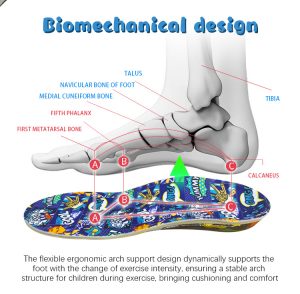
Flatfeet, also known as pes planus, is a condition where the arches of the feet are flattened. Causing the entire sole of the foot to come into contact with the ground. In children, flatfoot is a common and often temporary condition that can occur as a result of the normal development and growth of the feet.
In many cases, children with flatfoot do not experience any symptoms or complications, and their arches gradually develop and strengthen as they grow older. As a result, most children with flatfoot do not require any specific treatment and their condition resolves naturally over time.
However, in some cases, flatfoot can cause pain, discomfort, or other symptoms that may require intervention. If a child experiences persistent pain, difficulty walking, or other issues related to flatfoot, it is advisable to take treatment.
Treatment options for children with symptomatic flatfoot may include:
1. Observation and reassurance
In many cases, flatfoot resolves on its own as the child grows. Regular monitoring by a healthcare professional can help ensure that the condition is not worsening or causing any complications.
2. Supportive footwear
Choosing shoes with proper arch support and cushioning can help alleviate discomfort and provide additional support to the feet.
3. Physical therapy
Specific exercises and stretches can help strengthen the muscles and improve the flexibility of the feet and ankles, potentially reducing symptoms associated with flatfoot.
4. Orthotic devices
In some cases, custom-made or prefabricated orthotic inserts or shoe inserts may be recommended to provide additional support and correct any biomechanical abnormalities contributing to the flatfoot condition.
5. Surgery (rare cases)
In very rare cases where conservative measures fail to alleviate symptoms and the flatfoot condition is severe and causing significant impairment, surgery may be considered as a last resort.
It’s important to note that the treatment approach for children with flatfoot can vary depending on the severity of the condition, the presence of symptoms, and individual factors. Consulting with a healthcare professional is crucial to determine the most appropriate course of action for each child.
If you need children’s orthotic insoles, you can read this page: https://www.aideastep.com/kids-insoles/.
